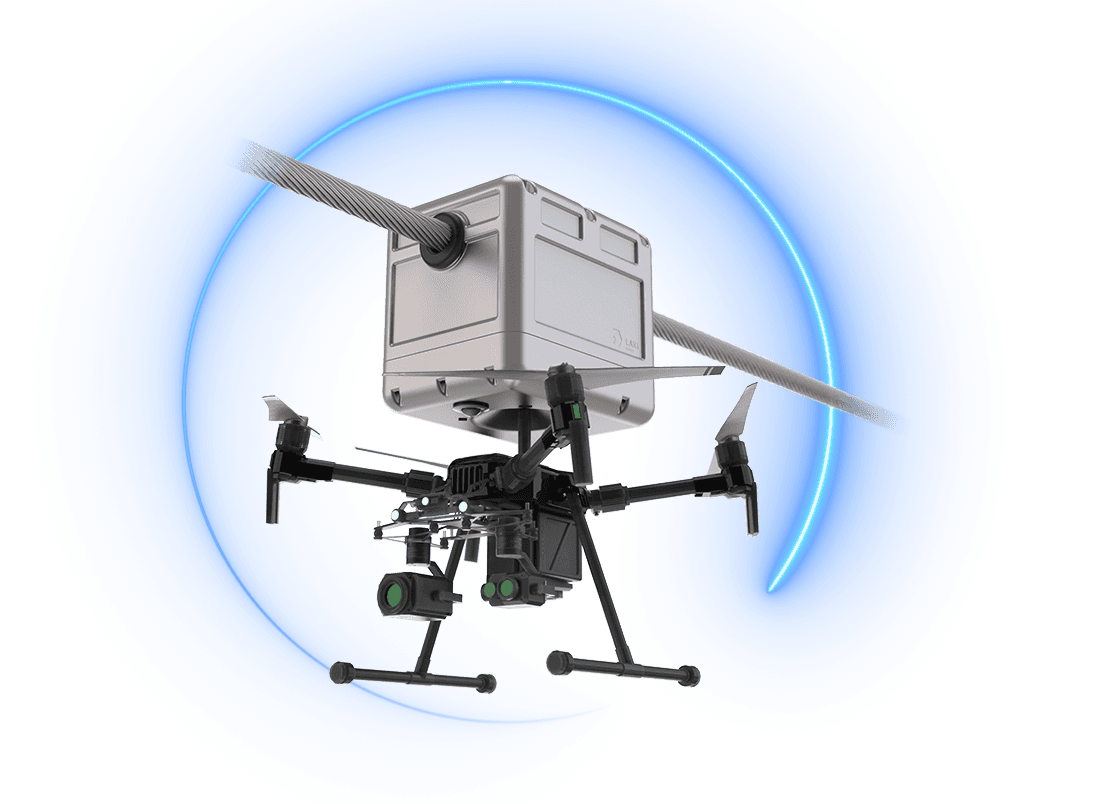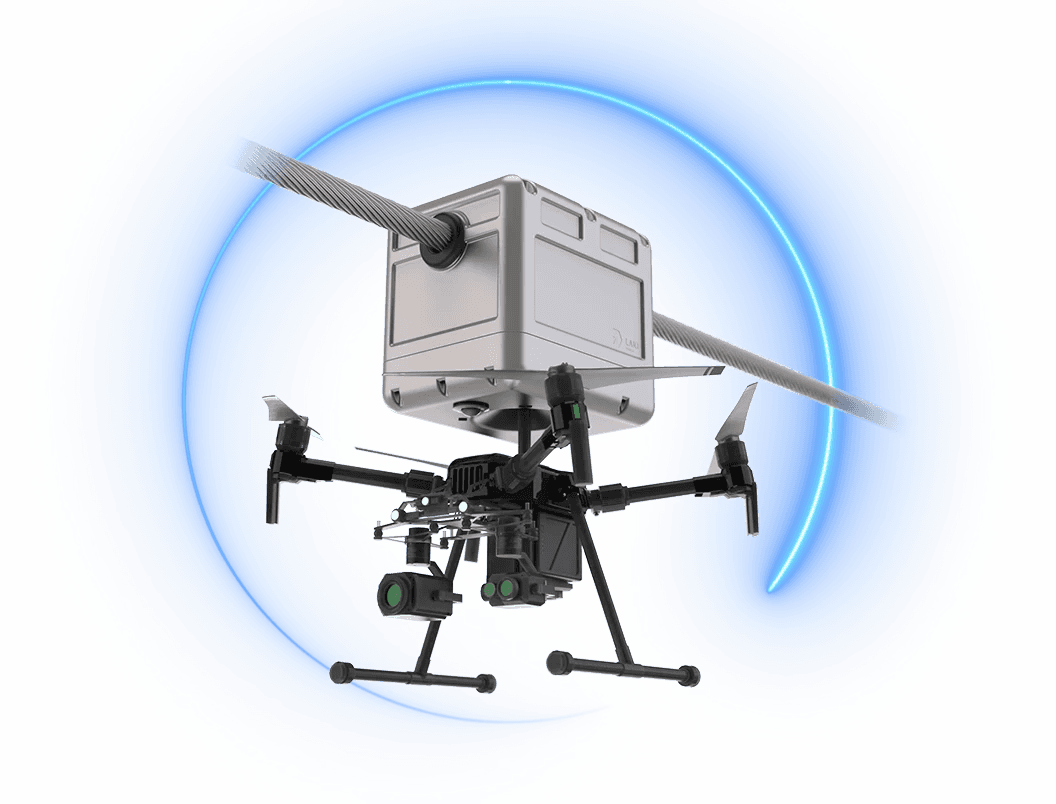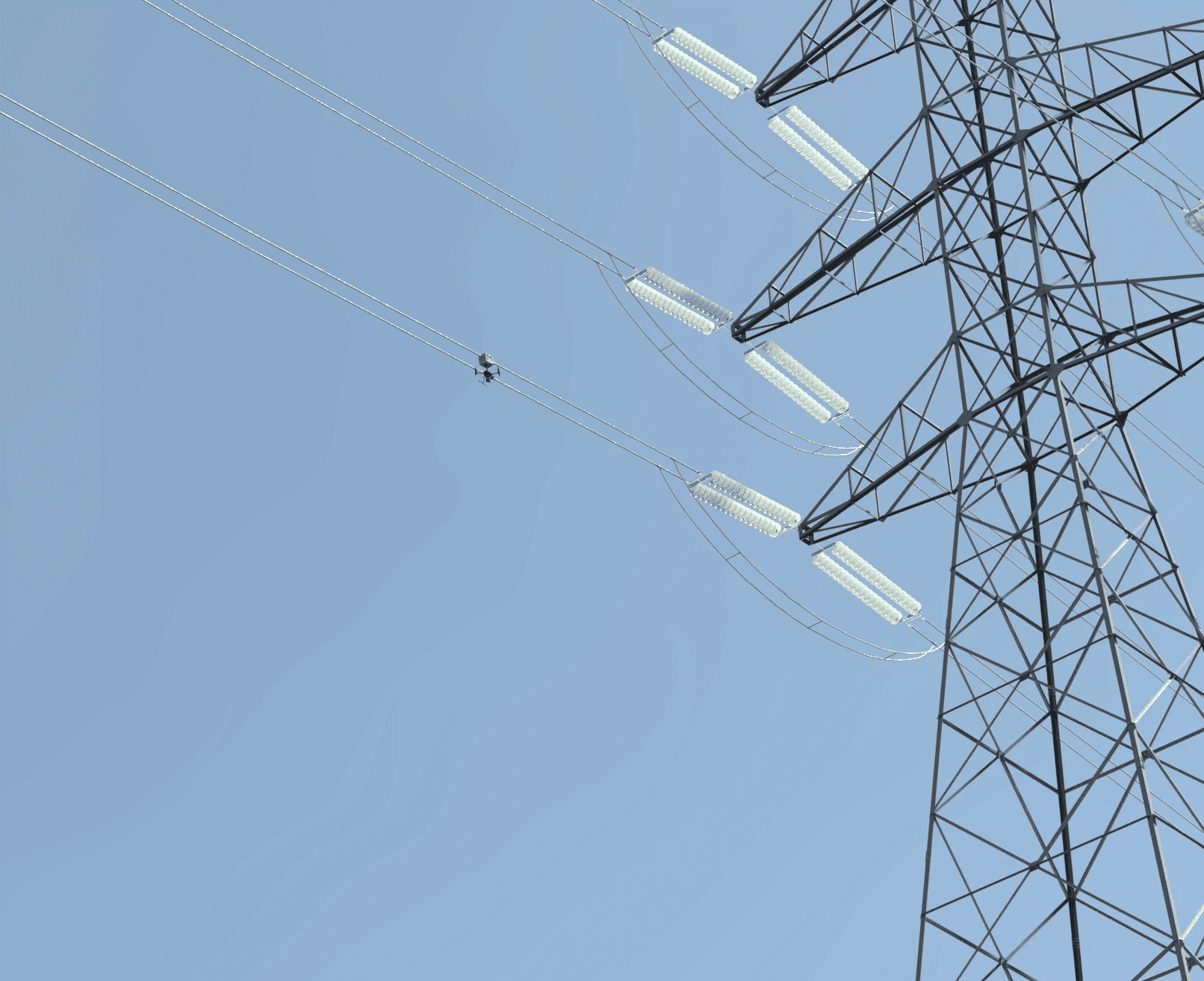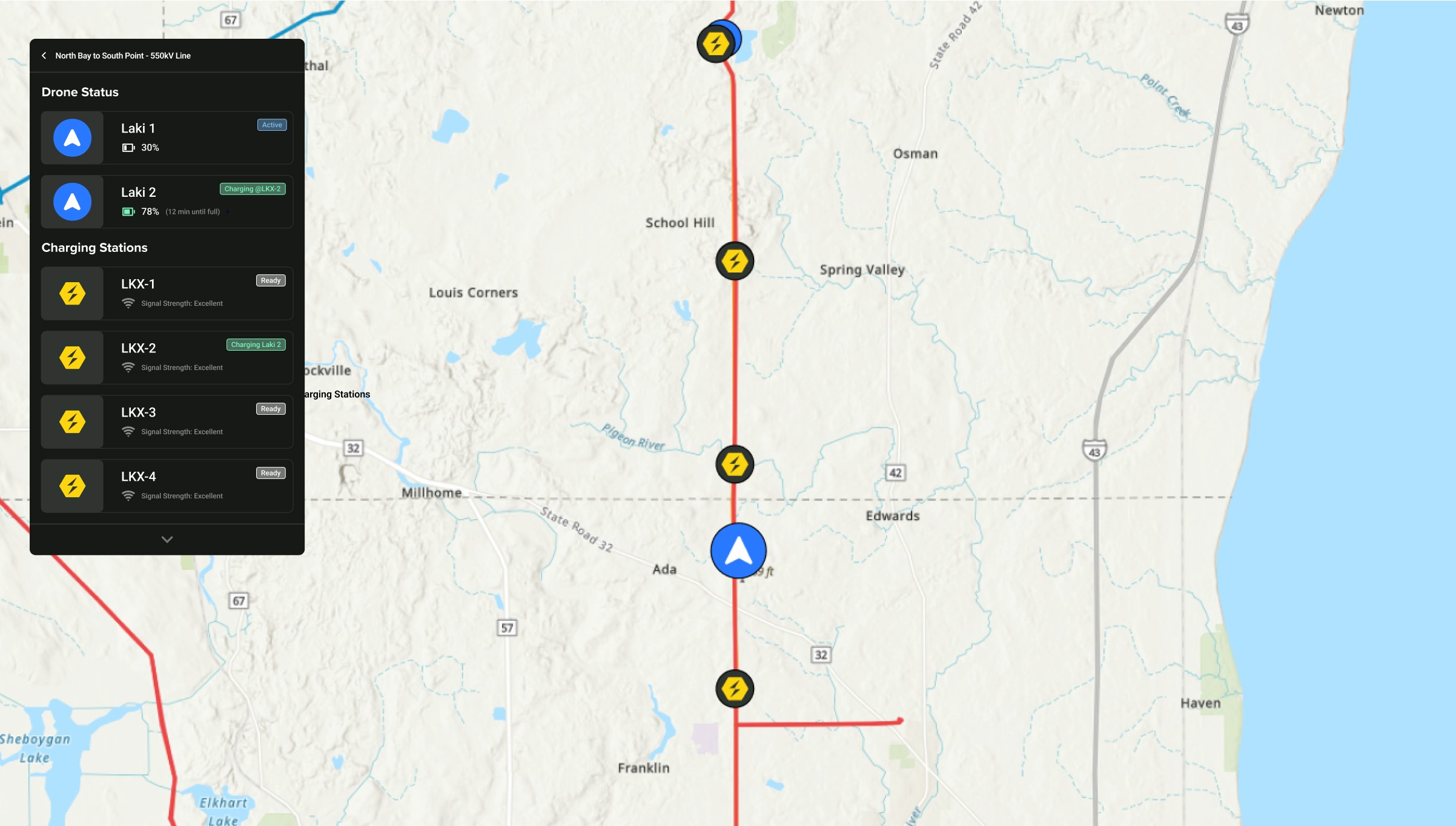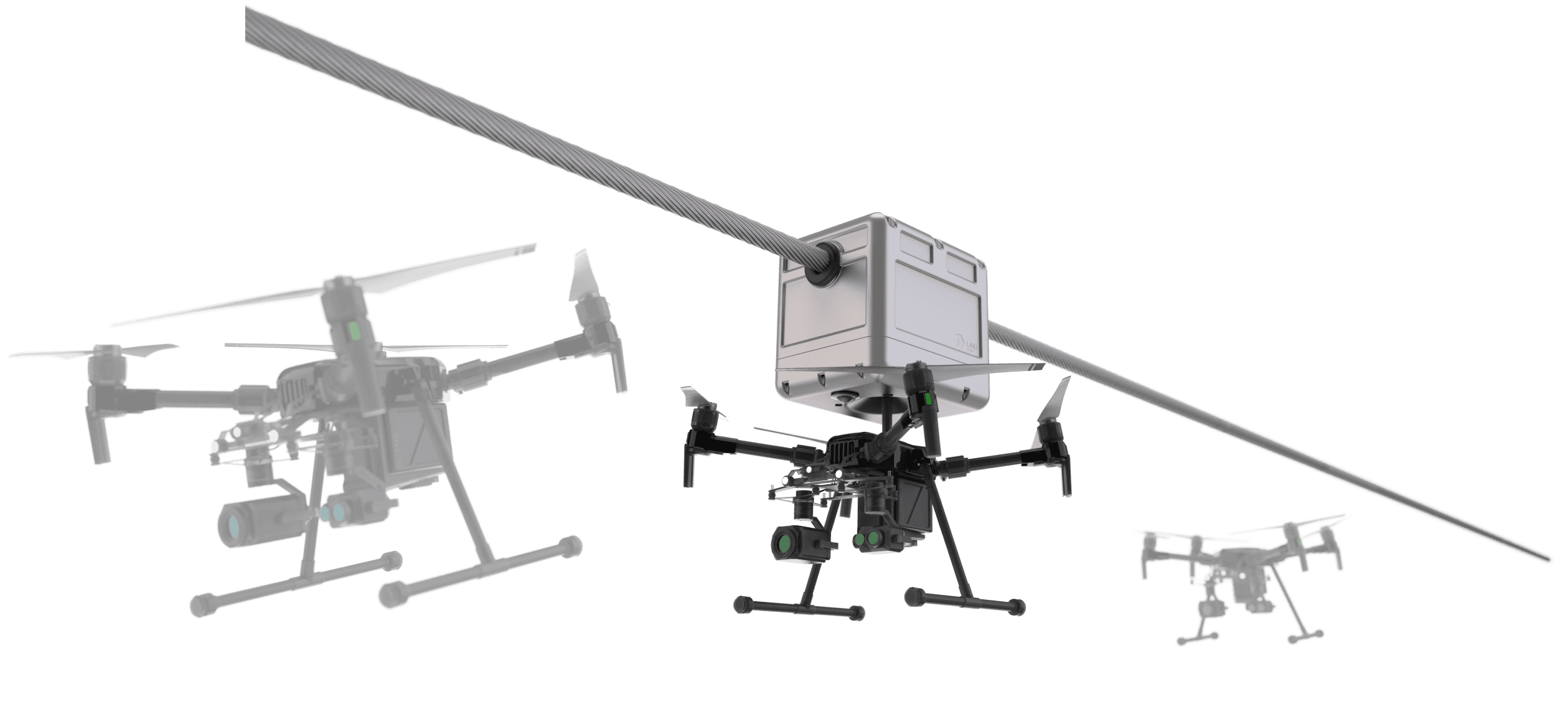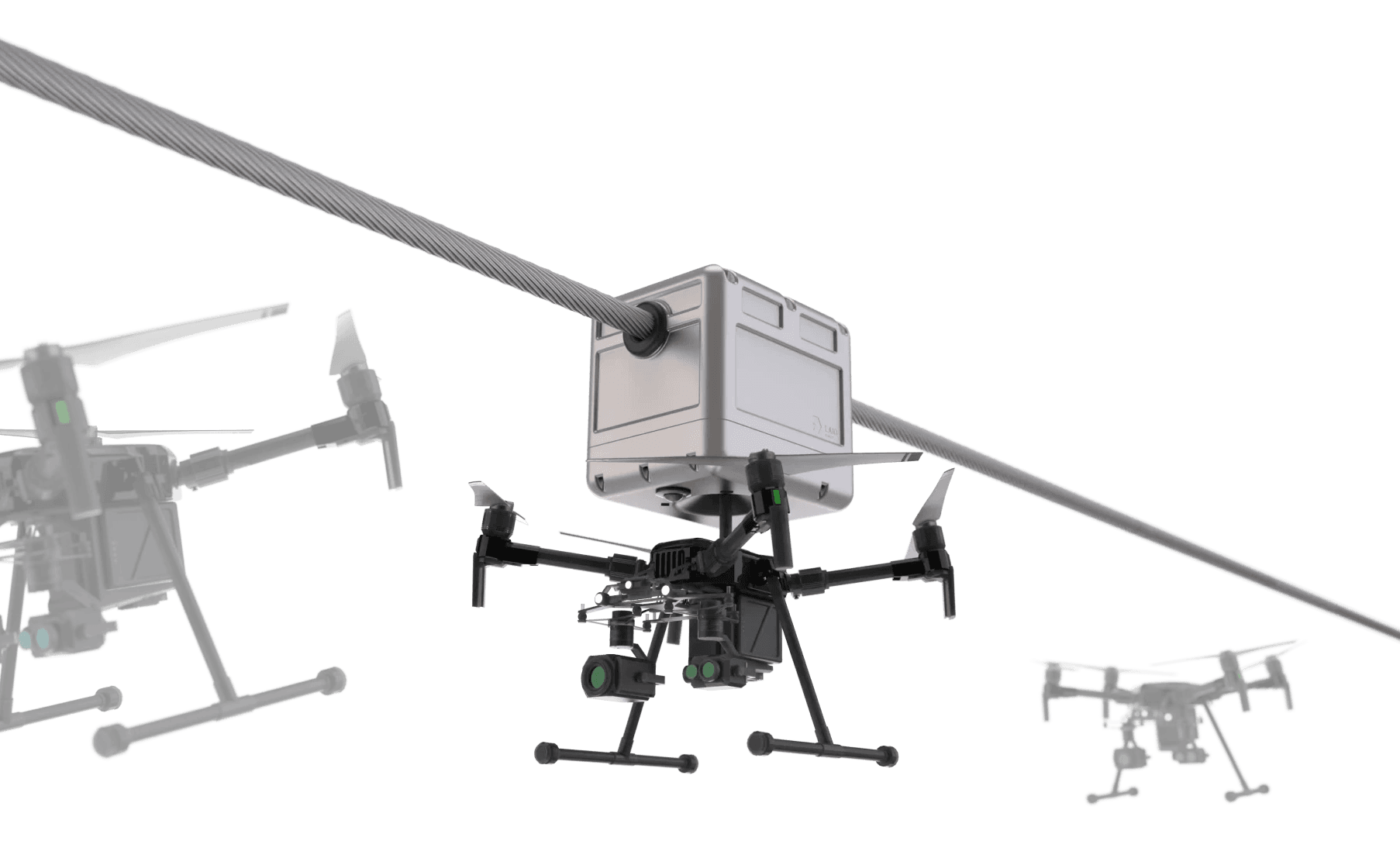Fully Autonomous
Grid Inspections
Autonomous Inspection
Perform continuous drone inspections without human intervention.
Fast Self-Charging
Power the drones directly from high-voltage lines in under 60 minutes.
UHD Imaging
Capture detailed images for analysis and early fault detection.
Deploy, Scan, Review
Plan, schedule, and review inspections using our easy-to-use cloud interface.
Why Laki Power
Why Choose LKX Drone Over Traditional Drone Operations?
LKX Drone automates inspections, reducing costs, improving safety, and ensuring continuous coverage without manual effort.
LKX-DRONE
Autonomous Operations: Drones deploy and recharge independently.
Fast Charging: Patented technology powers drones directly from the grid.
Continuous: Perform regular inspections without downtime.
Lower Costs: No need for ground crews or helicopters.
Streamlined Inspection Planning: Automates regular inspections.
Traditional Inspection Methods
Manual Deployment: Requires human operators for setup and monitoring.
Limited Battery Life: Frequent recharging interrupts operations.
Intermittent Inspections: Inspections limited by crew availability.
High Cost: Significant labor and equipment expenses.
Manual Planning: Requires scheduling and resources, often leading to missed inspections in remote areas.
Technology
Charging station: Mounted on high-voltage power lines, the charging station uses patented power harvesting technology to fast-charge drones during their missions—no external energy sources needed.
Drone and Connection Unit: Equipped with a secure docking unit, the drone recharges autonomously and features high-resolution cameras and thermal sensors for detailed inspections.
Patented Technology
We Use Otherwise Wasted Energy.
Deploy, Capture, Analyze
Use online software to monitor, deploy, and analyze images.
Global Partnerships



